Disclosure: This article contains affiliate links. We may earn a commission from purchases at no extra cost to you, which helps our travel content.
The moment I stepped onto the narrow, winding streets of Stone Town, the air thick with the scent of cloves and salt water, I knew this UNESCO World Heritage site would captivate both the scientist and cultural explorer in me. As someone who typically spends more time beneath the waves than wandering historical alleyways, Zanzibar's historic heart offered a perfect weekend respite from my coral restoration project along Tanzania's coast. Stone Town isn't just a collection of weathered buildings and bustling markets—it's a living museum where Swahili, Arabic, Indian, Persian, and European influences have created one of Africa's most culturally significant coastal settlements. The intricate wooden doors, each telling stories of the families behind them, reminded me that like coral reefs, human cultural ecosystems develop distinct patterns over time, shaped by countless interactions and environmental factors. Join me as I navigate Stone Town's labyrinthine alleys, discovering how this remarkable coastal community connects to the marine world I study, while offering couples a perfect autumn getaway filled with history, cuisine, and unforgettable cultural immersion.
Navigating the Living Labyrinth
Stone Town's narrow streets form an intricate maze that defies conventional navigation—much like exploring a complex reef ecosystem for the first time. My marine biologist's instinct for mapping underwater topographies proved surprisingly useful here, though I still found myself gloriously lost multiple times during my weekend visit.
The architectural tapestry reveals itself gradually: imposing Omani-style buildings with ornately carved doorways stand alongside simple coral rag structures, while Indian-influenced balconies overlook bustling market streets. Each building bears the weathering patterns of coastal proximity—salt erosion creating textures that remind me of the calcium carbonate structures I study underwater.
I recommend beginning your exploration at the Old Fort (Ngome Kongwe), built by Omani Arabs in the late 17th century after expelling the Portuguese. This provides an excellent orientation point before diving into the labyrinth. From there, allow yourself to wander without agenda—the true magic of Stone Town reveals itself when you surrender to its flow.
I found my travel journal invaluable for sketching architectural details and jotting down observations about the cultural intersections I witnessed. The tactile experience of documenting observations on paper connected me more deeply to the place than digital documentation alone would have.
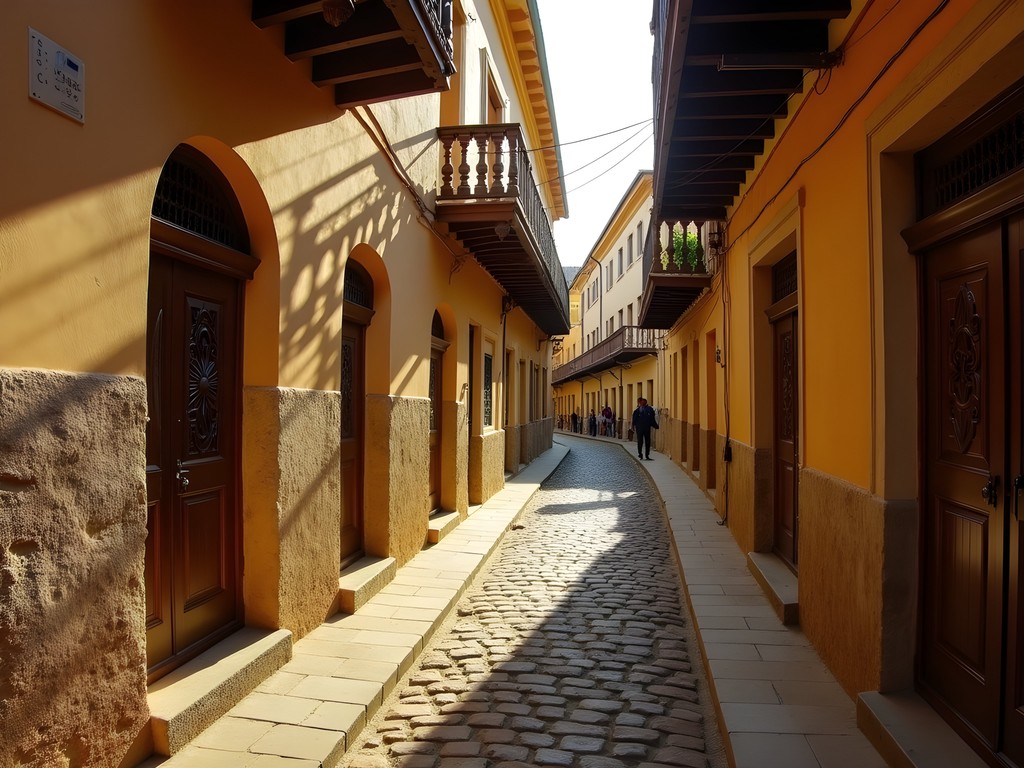
💡 Pro Tips
- Download an offline map but don't rely on it exclusively—getting pleasantly lost is part of the experience
- Visit early morning (before 8am) to experience local life before tourist crowds emerge
- Look up frequently—some of the most interesting architectural details are above eye level
The Language of Doors: Cultural Storytelling Through Architecture
As a linguist at heart (I've studied five languages to better connect with coastal communities during my research), I was fascinated by Stone Town's famous doors—each functioning as a cultural text to be read and interpreted. These aren't merely entrances but elaborate status symbols and historical documents carved in wood.
The most distinctive are the massive rectangular Indian-style doors, adorned with brass studs originally designed to prevent elephants from battering them down—a design element brought from Gujarat that persisted long after its practical purpose became obsolete. In contrast, the Arab-style doors feature intricate geometric patterns and often Quranic inscriptions, reflecting Islamic artistic traditions.
I spent an entire morning photographing these magnificent entrances with my travel camera, which proved perfect for capturing the intricate details in the variable lighting conditions of the narrow streets. The articulated screen allowed me to shoot from creative angles without attracting attention.
What struck me most was how these doors represent the ultimate fusion of practical function and cultural expression—each brass stud, carved flower, or chain motif conveying specific meaning about the family's status, profession, or cultural heritage. My guide pointed out that fish motifs often indicated a family connected to maritime trade, while vine patterns suggested agricultural wealth.
For couples visiting Stone Town, I suggest making a game of identifying the different door styles and discussing what stories they might tell—it creates a shared experience of cultural discovery that's both intellectually stimulating and visually rewarding.
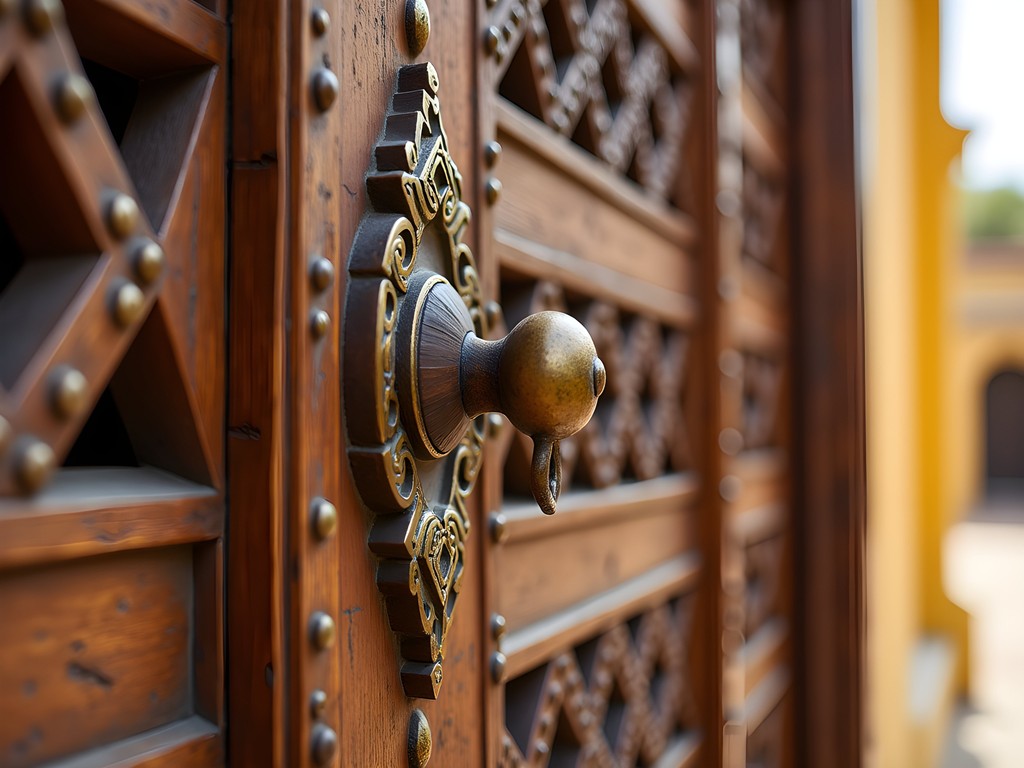
💡 Pro Tips
- Book a specialized architecture tour with a local guide who can explain the symbolism
- Visit the Zanzibar Gallery on Kenyatta Road to purchase a book on door symbolism
- Photograph doors in early morning or late afternoon when shadows accentuate the carvings
Maritime Heritage: Where Ocean Meets Culture
As a marine biologist, I'm naturally drawn to the connections between coastal communities and their adjacent marine ecosystems. Stone Town's relationship with the Indian Ocean permeates every aspect of life here—from the seafood markets to the architectural elements incorporating coral rag as a building material.
The Dhow Harbor, particularly at sunset, offers a mesmerizing glimpse into maritime traditions that have remained largely unchanged for centuries. These wooden sailing vessels—with their distinctive triangular sails—have connected Zanzibar to Arabia, India, and the African mainland for over a millennium, creating the trade networks that built Stone Town's multicultural identity.
I spent an enlightening afternoon at the Palace Museum (formerly the Sultan's Palace), where exhibits detail Zanzibar's maritime history and its role in Indian Ocean trade networks. The museum occupies a seafront building that served as the sultan's residence until the 1964 revolution. While the exhibits could benefit from modernization, the historical photographs and maritime artifacts provide valuable context for understanding Stone Town's development.
For a truly immersive experience, I recommend arranging a sunset dhow cruise through your accommodation. Our two-hour journey aboard a traditional vessel provided not only spectacular views of Stone Town's seafront but also insight into traditional sailing techniques. The captain, a third-generation seafarer, shared fascinating stories about navigating by stars—indigenous knowledge systems that parallel the scientific methods I use in my research but developed through generations of practical experience.
The interconnection between maritime heritage and cultural identity becomes most apparent at Forodhani Gardens night market, where local fishermen bring their daily catch to be transformed into spectacular seafood dishes right before your eyes.
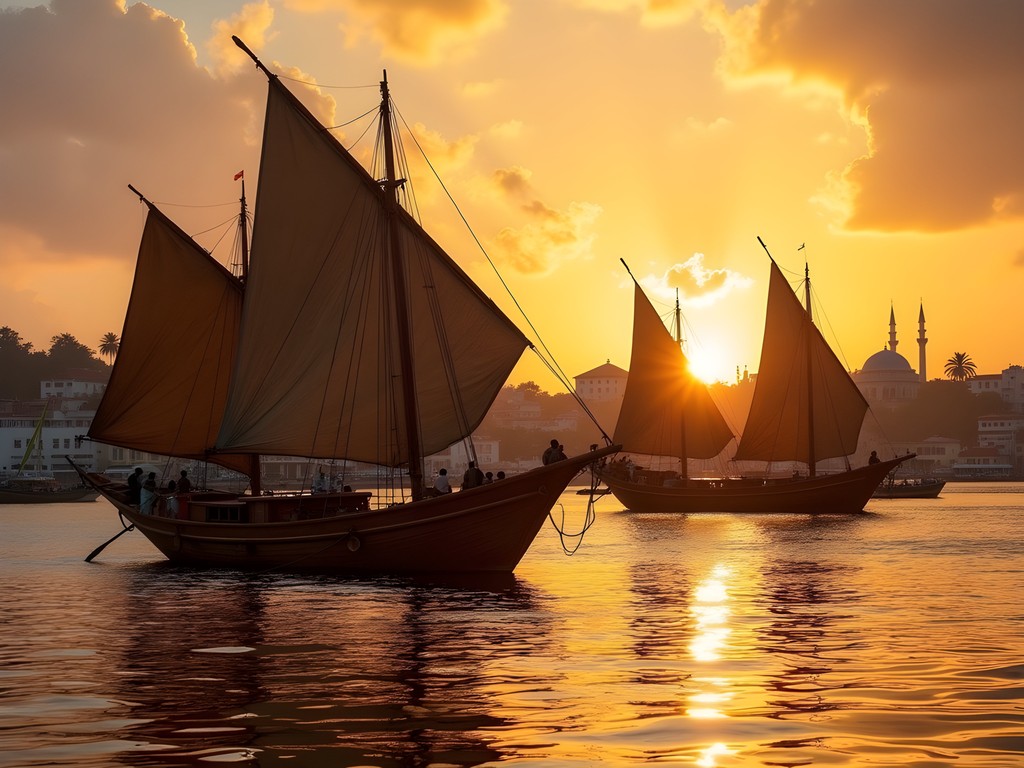
💡 Pro Tips
- Book a sunset dhow cruise at least one day in advance through your hotel
- Visit the House of Wonders maritime museum if open (it's been under renovation)
- Engage fishermen at the morning fish market for conversations about changing marine conditions
Culinary Crossroads: Tasting Stone Town's Cultural Fusion
If architecture represents Stone Town's cultural fusion made visible, then its cuisine is that same fusion made deliciously edible. As someone who plans travel itineraries around coffee and culinary experiences, I found Stone Town's food scene to be among the most fascinating aspects of my visit.
Spices form the foundation of Zanzibari cuisine—not surprising given the island's history as the world's largest clove producer and a major spice trading hub. I highly recommend beginning your culinary exploration with a spice farm tour just outside Stone Town. Our guide at Tangawizi Spice Farm demonstrated how each plant is grown and harvested, connecting the agricultural practices to the finished flavors we would later encounter in local dishes.
Back in Stone Town, the Forodhani Gardens night market offers an accessible introduction to local seafood preparations. Arriving around 6:30pm, I watched as vendors set up their stalls with artistic displays of grilled fish, lobster, octopus, and the local specialty—Zanzibar pizza (a savory crepe-like dish). While certainly touristy, the market provides a low-pressure environment to sample multiple dishes in one location.
For a deeper dive into Zanzibari cuisine, I enrolled in a cooking class at The Spice House, where we prepared a traditional Swahili curry using freshly ground spice mixtures. The instructor explained how Indian, Arabic, and African cooking techniques merged over centuries to create distinctive flavor profiles unique to the island.
Coffee culture here reflects similar cultural intersections. I started each morning at Puzzle Coffee Shop, where locally grown beans are prepared using methods that blend Turkish, Italian, and traditional East African techniques. My travel coffee grinder allowed me to prepare fresh coffee in my room using beans purchased from local vendors—a morning ritual that connected me to both the agricultural heritage and daily rhythms of the island.

💡 Pro Tips
- Eat at Lukmaan Restaurant for authentic local food at reasonable prices
- Book a spice farm tour that includes transportation and lunch for best value
- Visit the night market after 7pm when prices become more negotiable
Ethical Engagement: Responsible Tourism in Stone Town
As both a scientist and traveler committed to sustainable tourism, I approach cultural immersion with the same ethical considerations that guide my marine conservation work. Stone Town presents unique opportunities for meaningful cultural exchange, but also requires thoughtful engagement.
Zanzibar's complex history includes the dark chapter of the slave trade—a reality confronted at the Anglican Cathedral, built on the site of the former slave market. The small museum beneath the cathedral provides essential historical context, while the monument outside offers a powerful memorial to this painful history. I found this site crucial for understanding how Stone Town's architectural beauty was partially funded through human suffering—a complexity that responsible tourism must acknowledge rather than gloss over.
For accommodations, I chose Kisiwa House, a locally-owned boutique hotel in a restored 19th-century Zanzibari merchant house. While not the least expensive option, staying in a historic building that's been thoughtfully preserved supports architectural conservation efforts. The packing cubes I brought helped me organize my belongings efficiently in the antique wardrobe without damaging the historic furniture.
Photography ethics require particular attention in Stone Town. Always ask permission before photographing residents, especially women. I found that learning a few Swahili phrases created goodwill and often turned photo requests into genuine cultural exchanges. My approach is to engage in conversation first, explaining my interest in cultural documentation, and only then requesting a photograph.
Finally, water conservation remains critical on an island with limited resources. The historic plumbing systems in Stone Town weren't designed for modern tourism levels. Simple practices like reusing hotel towels and taking shorter showers help reduce strain on these systems—applying the same conservation mindset I bring to marine environments.

💡 Pro Tips
- Support local artisans at cooperatives like Upendo where proceeds directly benefit community members
- Choose locally-owned accommodations that preserve historic buildings
- Learn basic Swahili greetings to show respect for local culture
Final Thoughts
As I departed Stone Town, watching its distinctive skyline recede from the ferry, I reflected on how this UNESCO site exemplifies the interconnectedness I study as a marine biologist. Just as coral reefs form through countless organisms contributing to a greater whole, Stone Town's cultural landscape has been shaped by centuries of diverse influences creating something uniquely beautiful. For couples seeking a weekend immersion in living history, Stone Town offers an unparalleled opportunity to explore together—navigating labyrinthine streets, decoding architectural symbolism, and savoring fusion flavors that tell stories of ancient trade routes. The autumn months provide ideal weather for exploration without the crowds of high season. Whether you're drawn by the architecture, cuisine, or maritime heritage, Stone Town rewards curious travelers with layers of discovery that continue to reveal themselves long after you've returned home. I'll certainly be back—both for the ongoing coral restoration project along Zanzibar's coast and to further explore the cultural ecosystem that makes Stone Town an enduring testament to human creativity and resilience.
✨ Key Takeaways
- Stone Town is best experienced through unstructured wandering rather than rigid itineraries
- The architectural details, particularly the famous doors, provide a visual language for understanding Zanzibar's multicultural history
- Autumn offers ideal weather conditions with fewer tourists and more authentic cultural experiences
📋 Practical Information
Best Time to Visit
September-November (fall shoulder season)
Budget Estimate
$80-150 per day for mid-range accommodations, meals and activities
Recommended Duration
2-3 days
Difficulty Level
Beginner


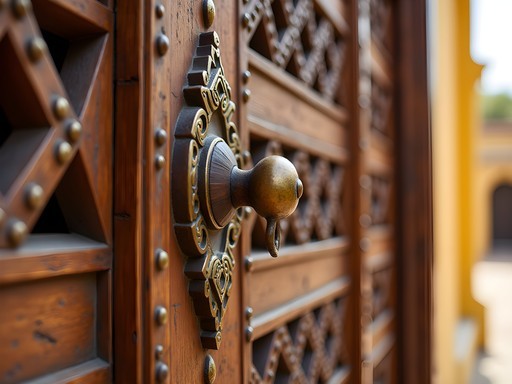
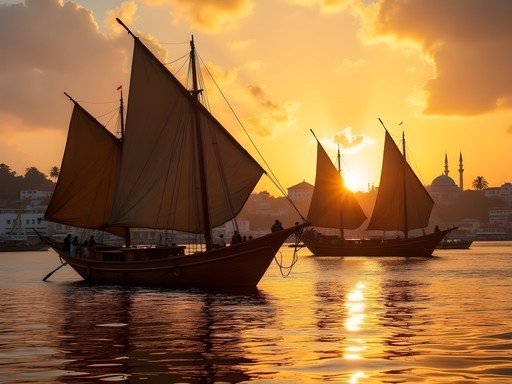












Comments
summerwalker
Those photos of the doors are stunning! I've heard so much about Stone Town's architecture but your descriptions really bring it to life. Did you feel safe walking around by yourself? Planning a solo trip there next year.
Avery Andrews
Thank you! I felt very safe during daylight hours. The streets get quieter at night, so I usually joined small groups in the evenings. The locals are incredibly friendly and helpful if you ever need directions!
roamguide
Solo female traveler here - felt totally comfortable in Stone Town! Just use normal travel awareness. The maze-like streets can be confusing but that's part of the charm!
roamqueen
Just booked my trip after reading this! Can't wait to try that spiced coffee you mentioned!
Amanda Morris
Avery, you've captured the essence of Stone Town beautifully! I stayed there for a week last year in a small guesthouse with one of those magnificent carved doors you mentioned. The family who owned it explained that the brass studs (originally to protect against elephants!) tell stories about the family's status and heritage. My favorite memory was joining a local cooking class where we made proper Zanzibar biryani from scratch. The instructor took us to the market first to select spices, and I've been using my spice grinder at home trying to recreate those incredible flavors ever since! Have you tried making any Zanzibari dishes since your return?
Avery Andrews
That cooking class sounds amazing, Amanda! I've been experimenting with pilau rice at home, but I can't quite get the spice balance right. Would love to know which cooking class you took - might need to plan a return trip!
Amanda Morris
It was with The Spice House near Jaws Corner! Small group and completely authentic - the grandmother of the family was the real mastermind. Definitely worth a return trip!
islandwalker
Going to Zanzibar in September! How many days would you recommend for exploring Stone Town properly?
Avery Andrews
I'd say at least 2 full days for Stone Town itself if you want to really soak it in! One day for the main sights and another to wander and discover the hidden corners. The sunset from Forodhani Gardens is unmissable!
Amanda Morris
I'll second that! Two days minimum. And make sure to book a spice tour that includes the rural areas outside town - gives you such a great contrast to the urban experience of Stone Town.
roamguide
This post brings back so many memories! I wandered Stone Town last year and got completely lost in those alleyways - best mistake ever! Ended up discovering this tiny spice shop where the owner gave me a mini-lesson on Zanzibar's spice trade history. Those carved doors are incredible storytellers if you know what to look for. Did you try the Zanzibar pizza from the night market? Total game changer!
Avery Andrews
Getting lost there is practically a rite of passage! And yes - the Zanzibar pizza was life-changing. I'm still dreaming about that mix of savory and sweet versions!
roamguide
Right?! I still crave that banana-chocolate one at random moments!
Nicole Russell
Avery, you captured Stone Town's essence perfectly! I spent a week there last summer and completely fell in love. For anyone planning a visit - don't miss Emerson on Hurumzi for sunset drinks with the most incredible views over the city. Also, I found the locals to be incredibly welcoming when you venture off the main tourist paths. A fisherman invited me to see his family's traditional boat-building techniques near the harbor. These spontaneous connections were the highlight of my trip. And yes, those carved doors tell such amazing stories once you learn to read them! Did you make it to Prison Island to see the giant tortoises?
vacationking
Great post. We got lost in those narrow streets too. Best kind of lost!
islandmate
OMG this post brings back THE BEST memories!! Stone Town is magical! Those doors! That food! The smell of spices everywhere! I'm dying to go back!
travelbuddy
Thinking about visiting Stone Town next year. Is it safe to explore alone? And would you recommend a guide for the first day?
islandmate
I went solo last year and felt totally safe! But I did use a local guide on day one which helped me get oriented. After that I explored on my own no problem.
Nicole Russell
@travelbuddy Definitely recommend a guide for the first morning! I used Stone Town Walking Tours and my guide Ali was fantastic - taught me how to navigate the streets and shared so much local history. After that initial tour, I felt confident exploring solo.
photoseeker3494
How many days would you recommend staying in Stone Town itself? Is it worth basing there for exploring the whole island?
Bella Johansson
I'd say 2-3 days for Stone Town itself, then move to a beach area. The town is amazing but small, and you'll want beach time too! Split your stay.
Venture X
Premium card with 2X miles, $300 travel credit, Priority Pass